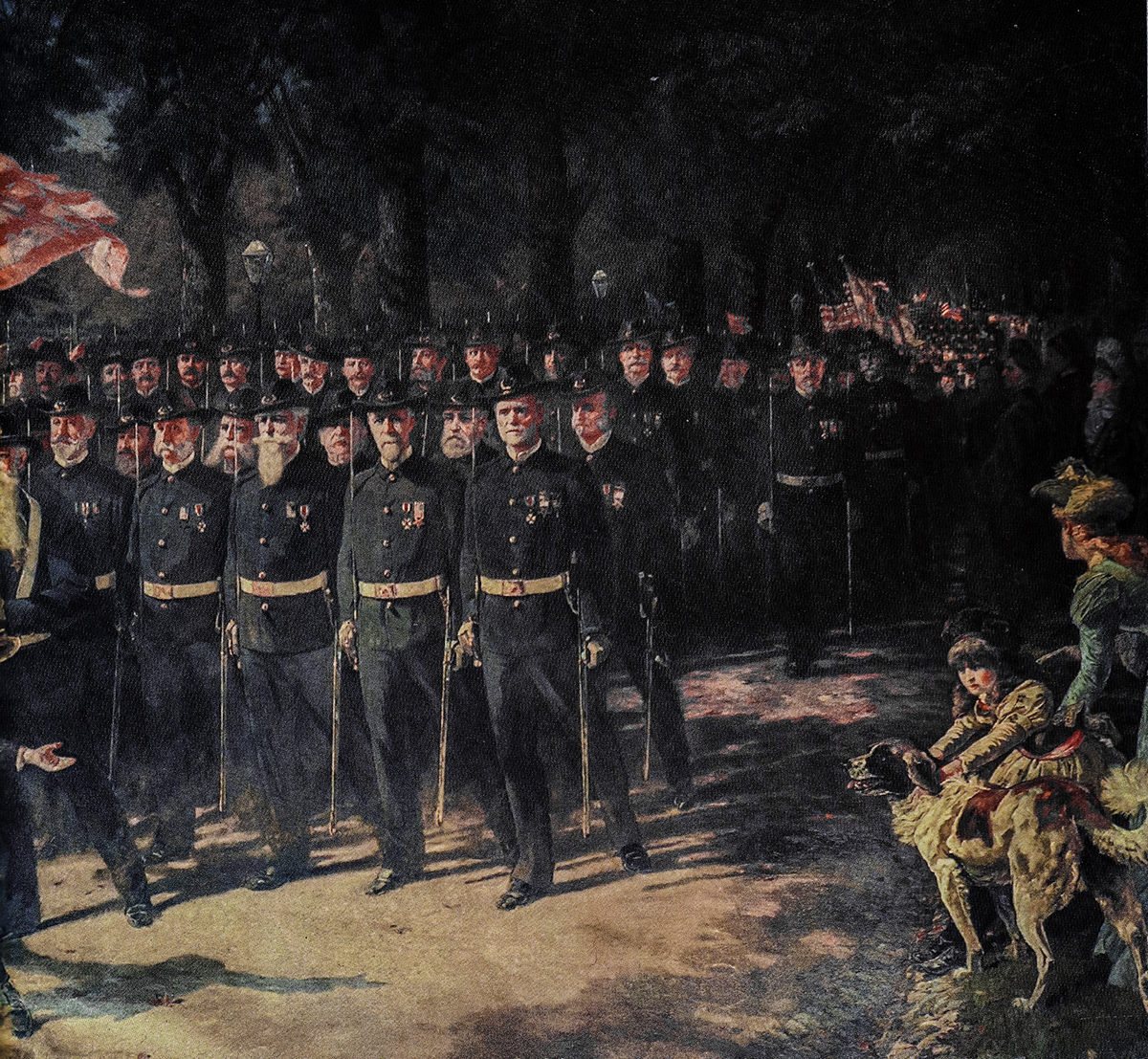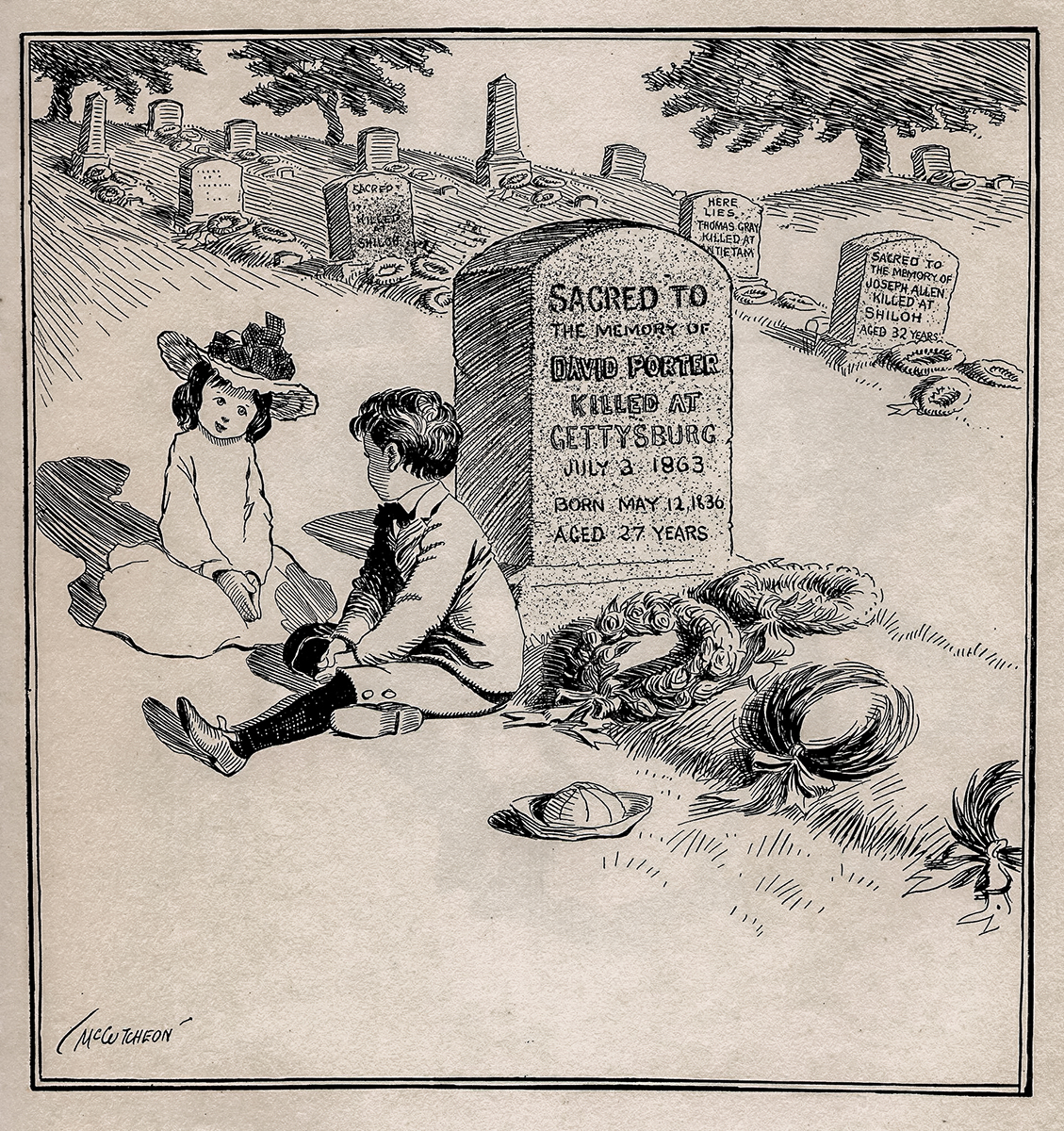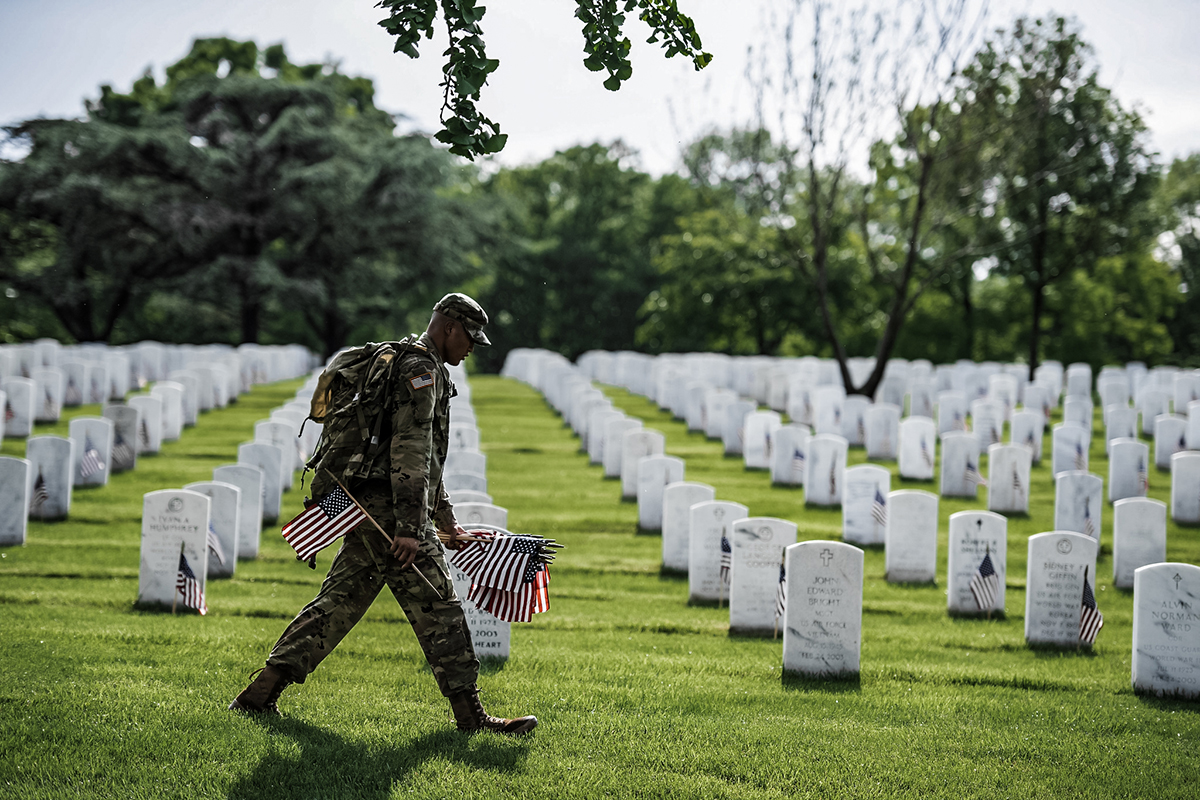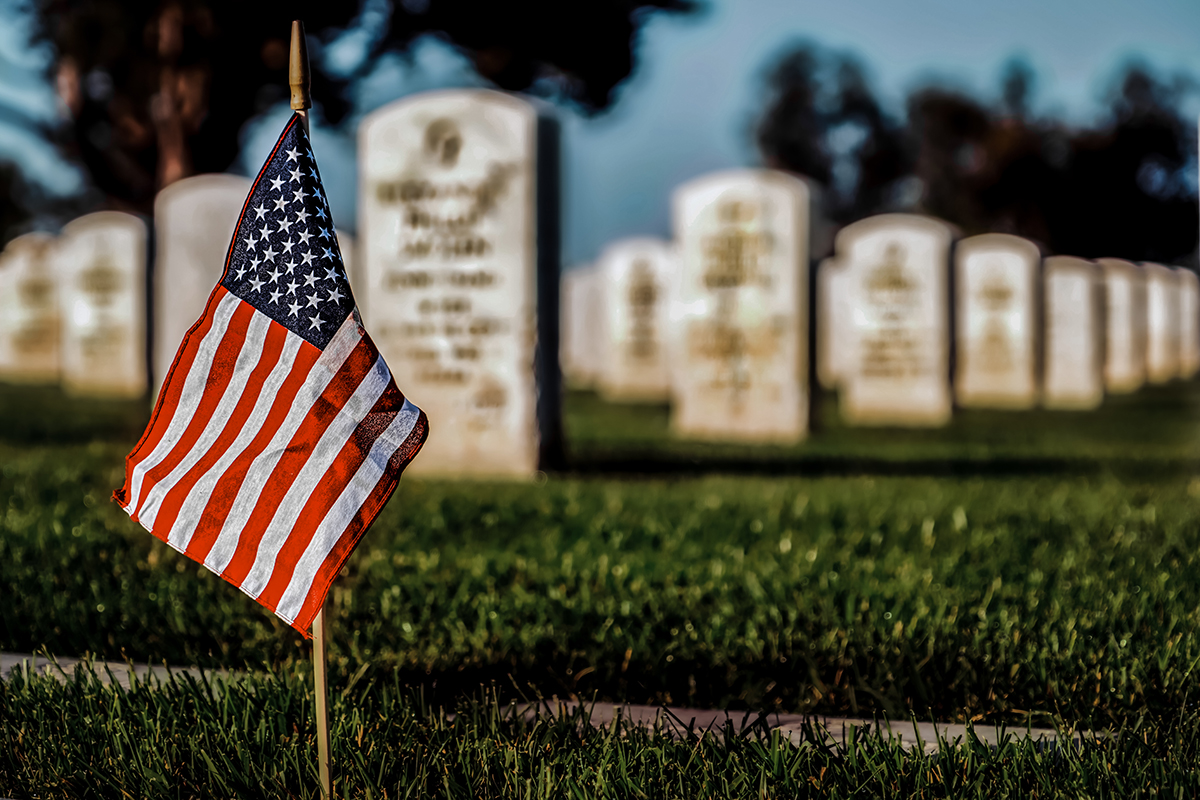In front of a grave marked with spring flowers and a small American flag, Gilbert Freer held his bugle at his side. He had just finished playing taps at Mount Hope Cemetery in Boston on May 30, 1868. Freer had stubbly facial hair, but his blue Union army uniform had a hint of new threading and his instrument wore the dents and deterioration of the war campaigns he’d carried it on.
Freer “had embarked on his first Civil War campaign in 1862 and had ridden with Sheridan, repelled Pickett and his desperate battalions at Gettysburg, foraged on the countryside in the Shenandoah Valley and finally marched on Richmond. He was 22 years old,” wrote the Democrat and Chronicle of Rochester, New York, in 1937.
Freer was the only bugler in attendance, but the ceremony was one of many held all over the nation that May to commemorate a new holiday, Decoration Day — the forerunner of today’s Memorial Day, a day when citizens were encouraged to decorate the graves of those killed in the Civil War. In Virginia, Gen. James A. Garfield marked the inaugural celebration of the day with a speech to 5,000 attendees at Arlington National Cemetery.

“I am oppressed with a sense of impropriety of uttering works on this occasion,” Garfield said. “If silence is ever golden, it must be here beside the graves of fifteen thousand men, whose lives were more significant than speech, and whose death was a poem, the music in which can never be sung.”
The national commencement was a response to Gen. John A. Logan, the head of the Grand Army of the Republic, an organization that took on the task of supporting Civil War veterans. He called for all Americans to participate in the day of remembrance.
“The 30th of May, 1868, is designated for the purpose of strewing with flowers, or otherwise decorating the graves of comrades who died in defense of their country during the late rebellion, and whose bodies now lie in almost every city, village and hamlet churchyard in the land,” he declared.

The exact history of the date of today’s Memorial Day is shrouded in multiple stories. President Lyndon B. Johnson went as far as to proclaim Waterloo, New York, as the “birthplace” following a formal community observance on May 5, 1866. But Logan chose the date for Decoration Day intentionally to avoid the anniversary of any well-known battle.
While it is commonly accepted that May 30, 1868, was the first national observance of the holiday at Arlington National Cemetery, local communities decorated graves in the years during the American Civil War. Southern women from Mississippi, Virginia, and South Carolina adorned the graves of their Confederate loved ones as well as the graves of Union adversaries. Songs, hymns, poems, and newspaper articles written in the South exhibit evidence Memorial Day was underway before reaching the national stage.
Still, the traditions remained informal.

The holiday custom, first destined to only honor fallen Union and Confederate soldiers of the Civil War, evolved following World War I to all American military personnel who had died in America’s wars. In 1971, Congress signed a federal law making Memorial Day an official holiday, which also secured a three-day weekend for all federal employees.
The national observance still takes place annually at Arlington National Cemetery, with primary duties performed by the US Army’s 3rd Infantry Regiment — the “Old Guard.” For the regiment’s “Flags In” tradition, Arlington graves are all marked with a small American flag one boot length from each of the 228,000 headstones. The regiment also participates in the placing of a wreath on the Tomb of the Unknown Soldier, often with the president or vice president.
READ NEXT – How to Prep for and Crush the Memorial Day Murph Challenge








Comments